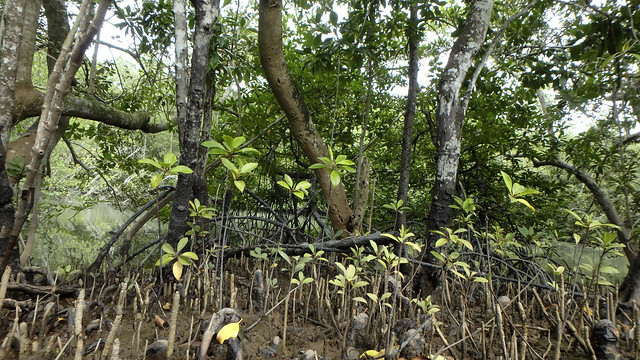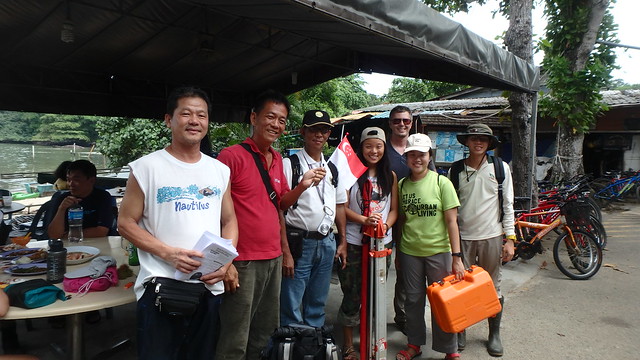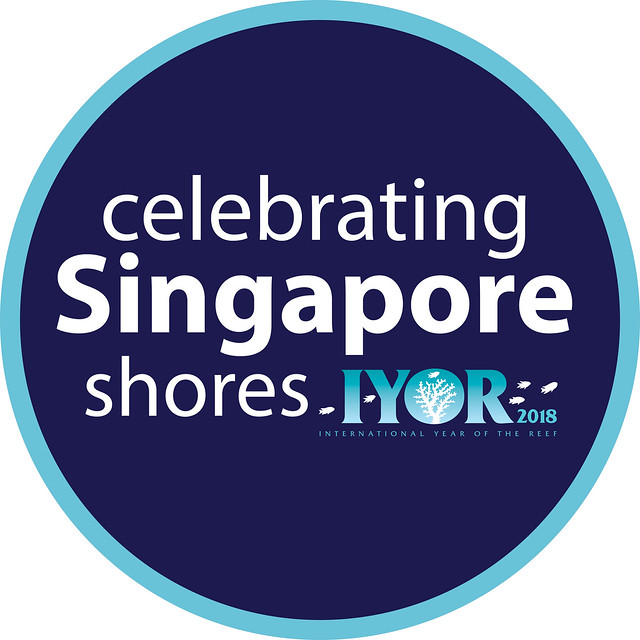Here's more about mangrove restoration at Pulau Ubin WITHOUT doing planting. It is a ground-up effort by a community team called R.U.M.!
Who is R.U.M.?
Volunteers of the Restore Ubin Mangroves (R.U.M) Initiative wants to re-create wild mangroves in deep holes left behind by aquaculture ponds abandoned for decades.
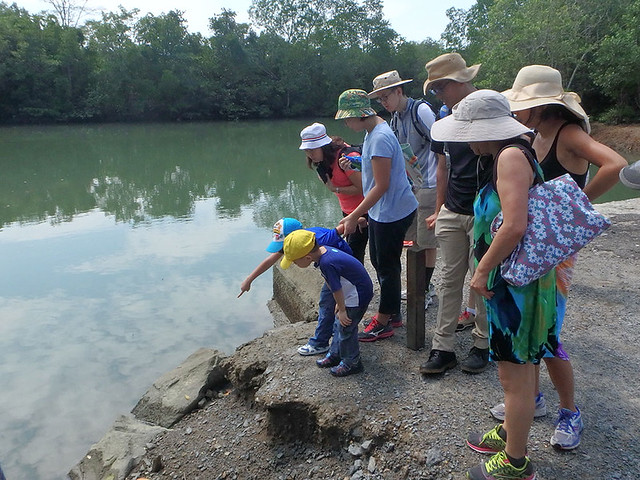 |
| Families looking at an abandoned aquaculture pond during a free monthly R.U.M. public walk. |
R.U.M. includes experts from tertiary institutions, NGOs, commercial enterprises that depend on Ubin mangroves, and individual enthusiasts, with the support of the National Parks Board.
How does R.U.M hope to restore mangroves at Pulau Ubin?
As the R.U.M. logo suggests, they hope to let Mother Nature do the planting! Also known as Ecological Mangrove Restoration (EMR), this is done by creating the ideal conditions for mangrove babies.
Mangrove seeds and seedlings will settle and grow naturally in suitable conditions. But like Goldilocks in the story with the three bears, conditions must be 'just nice'.
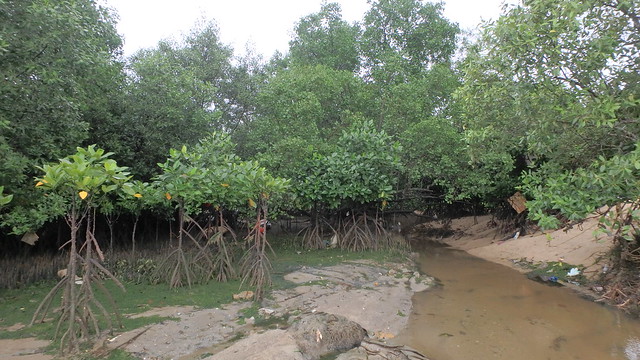 |
| Young mangrove trees growing naturally where it's 'just nice'. |
The water level should not be too shallow or too deep for the mangrove seedlings. Water flows not too fast or too slow. In conditions that are 'just nice' for them, mangroves will naturally flourish.
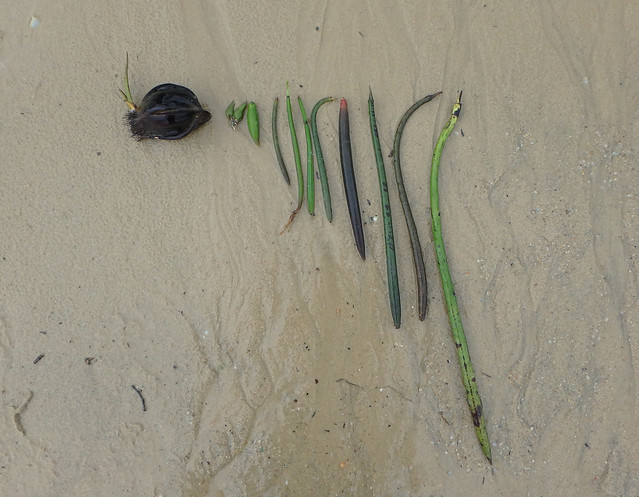 |
| Different kinds of mangrove seedlings can settle and grow best at different depths. |
If we just plant mangroves without considering these factors, the seedlings will die. Wasting time, effort and money. Until we fix the ground conditions, planting will continue to fail.
Why is Ecological Mangrove Restoration better than planting mangroves?
Instead of planting, it is also better to create conditions for mangroves to naturally establish because Mother Nature plants a rich forest. That is, many different kinds of trees and plants will settle, instead of one or a few kinds in typical planted mangroves.
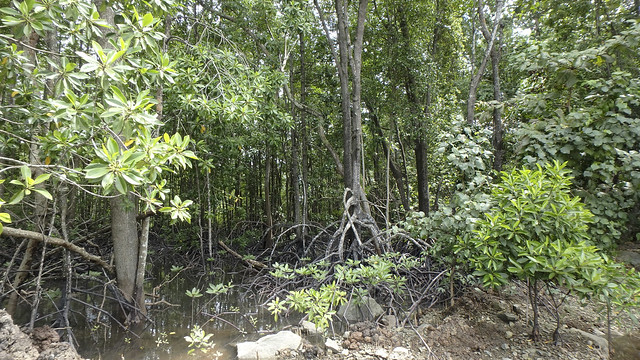 |
| A natural mangrove has many different kinds of trees. |
A natural mangrove forest tends to support a richer diversity of wildlife as different kinds of trees and plants provide a wider variety of shelter and food. It will also be more resilient to disease.
 |
| A rich natural mangrove forest shelters and feeds a wide variety of animals from air, land and sea. |
Thus, a natural forest will be better at providing good water quality and other important ecosystem services such as a nursery for seafood that fish farmers and fishermen rely on for a living.
By re-creating 'just nice' conditions for mangroves, Ecological Mangrove Restoration aims to give Mother Nature a hand. Thus allowing mangroves to naturally establish in abandoned aquaculture ponds.
How is Ecological Mangrove Restoration done?
Ecological Mangrove Restoration is somewhat like doing surgery to restore someone's health. Before we do the surgery, we need to do a non-invasive MRI or X-ray to find out the ground conditions. Only then will we know how to do the surgery with minimal harm to the person, and maximise the chances of full recovery.
The first step is to map the area which we want to restore. For example, the abandoned aquaculture ponds: how deep are they? what are the water conditions in them?
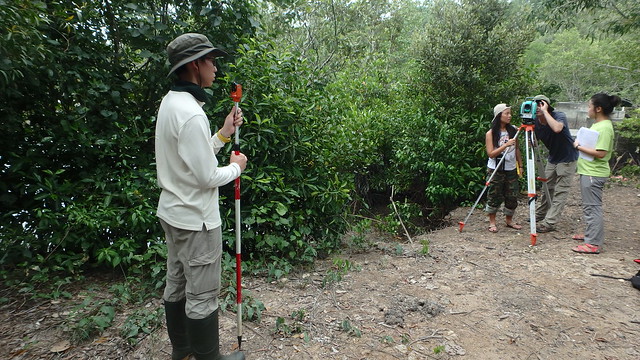 |
| Scientists mapping the ground conditions. |
As well as to map healthy forests so we know what conditions mangroves like. So we can re-create these conditions in the abandoned aquaculture ponds.
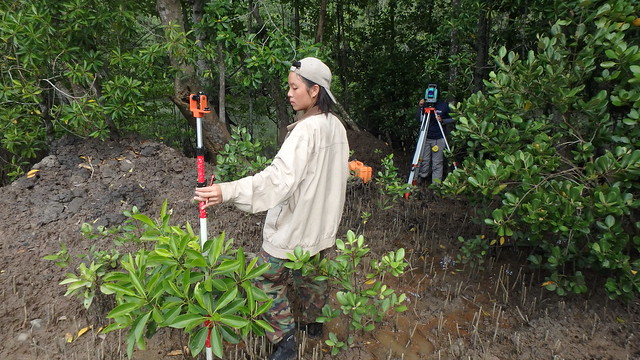 |
| Also mapping a natural mangrove forest. |
The second step is to adjust conditions in the abandoned aquaculture ponds so they match the healthy forests. After which, we can stand back and allow Mother Nature to do the planting.
What step is R.U.M. at now?
R.U.M. has completed mapping and is ready to go to the second step: Designing the mangrove restoration.
It is important to R.U.M. that the community have a part to play in designing the mangrove restoration. Their hope is to restore Ubin mangroves not just ecologically and biologically, but also socially and culturally. To restore the value of mangroves to the community on Ubin and beyond.
YOU are invited to contribute to designing the mangrove restoration!
20 Jan 2018 (Sat): "Our Mangroovy Mangroves" - FREE Workshop at Pulau Ubin

More details and registration online.
This workshop is organised by youths of Lepak In SG for International Year of the Reef 2018 with the support of the National Parks Board and Restore Ubin Mangroves (R.U.M.) Initiative.
This article is written for Celebrating Singapore Shores as part of International Year of the Reef 2018.

